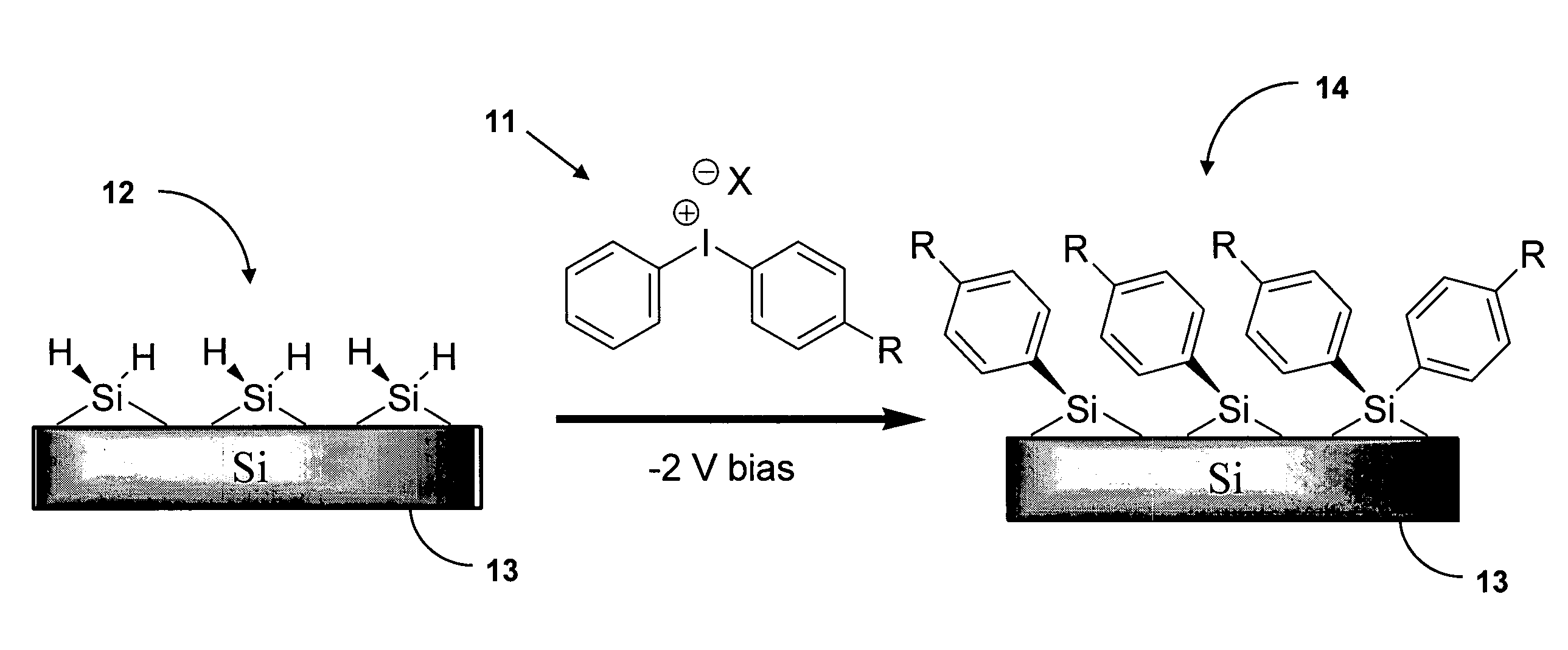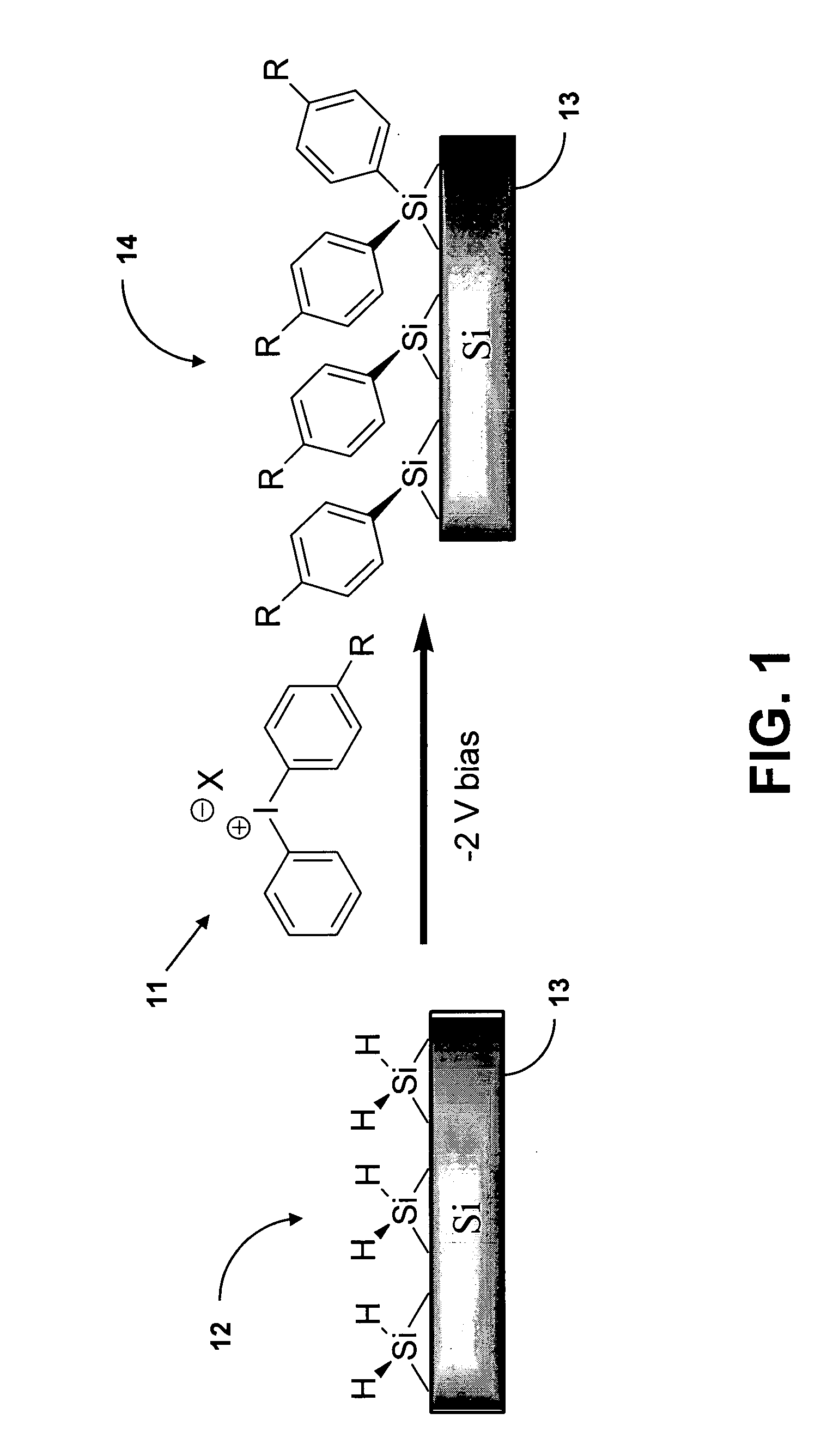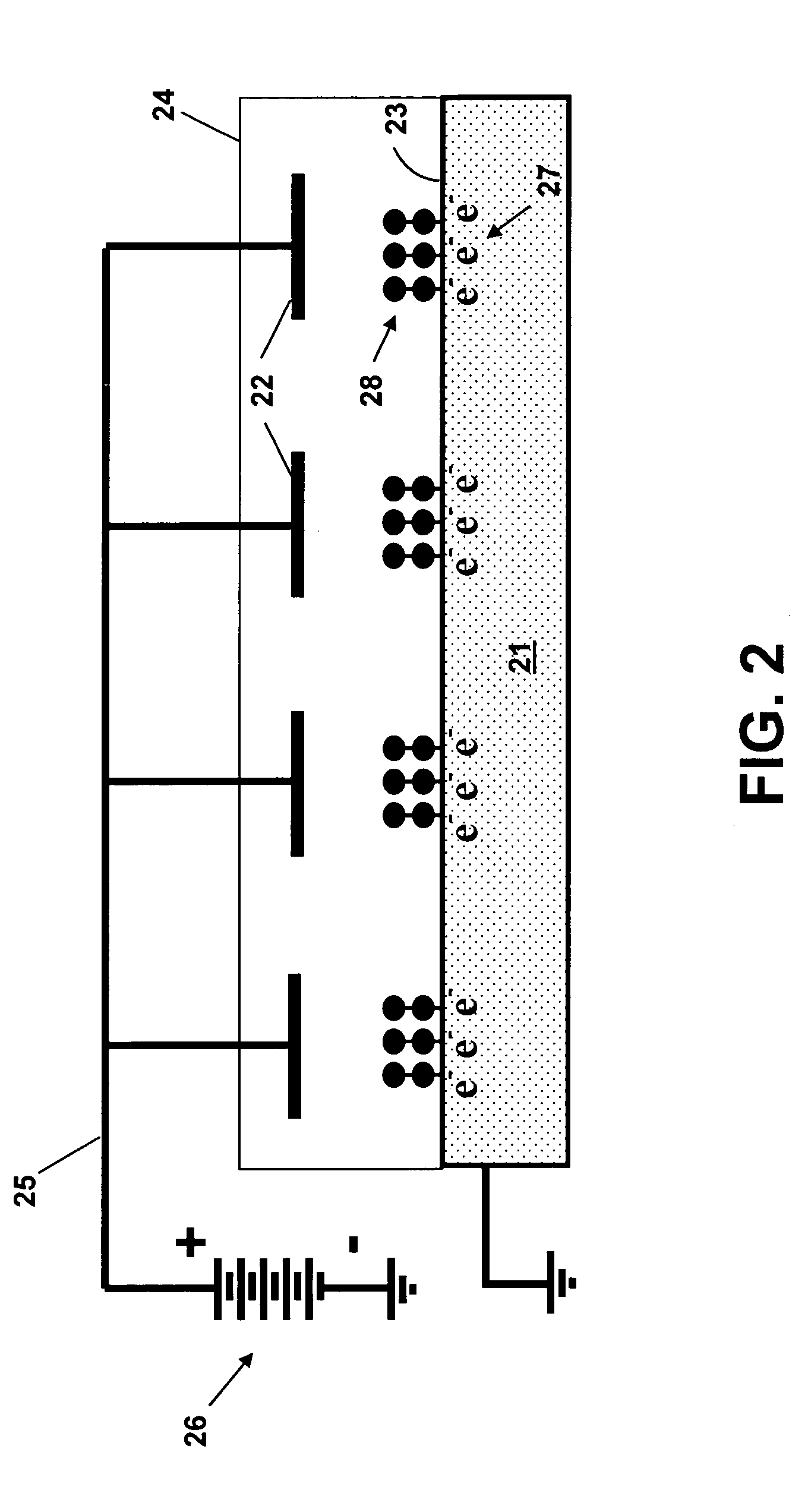Electrochemical assembly of organic molecules by the reduction of iodonium salts
a technology of organic molecules and salts, applied in the field of lithography, can solve the problems of iodonium molecules not self-assembling on oxide layers, iodonium molecules not assembling on conducting surfaces without, and surfaces with a relatively low work function, etc., and achieve the effect of facilitating mass production
- Summary
- Abstract
- Description
- Claims
- Application Information
AI Technical Summary
Benefits of technology
Problems solved by technology
Method used
Image
Examples
Embodiment Construction
[0022]In FIG. 1 is shown the electro-reductive assembly of an aryliodonium salt 11 on a silicon hydride terminated surface 12. The mechanism of iodonium salt assembly is thought to be similar to the self-assembly method proposed by Stewart et al. for the attachment of diazonium salts to silicon hydride terminated surfaces. The silicon substrate 13 is negatively biased (e.g., at −2 V). In the first step of the reaction mechanism, an electron is transferred from the surface of the silicon to the iodonium salt. A hemolytic cleavage of the carbon-iodine bond results in an aryl radical and iodobenzene in solution. The radical can then be combined with the surface, forming a silicon-carbon bond. Once formed, the new covalent bond is very stable and the resulting monolayer 14 is chemically robust. In general, the iodonium salt can be reacted with surfaces comprising metals, carbon, or silicon via a reduction pathway to produce a metal-carbon, carbon-carbon, or silicon-carbon bond.
[0023]Man...
PUM
| Property | Measurement | Unit |
|---|---|---|
| Electrical conductor | aaaaa | aaaaa |
| Stability | aaaaa | aaaaa |
| Semiconductor properties | aaaaa | aaaaa |
Abstract
Description
Claims
Application Information
 Login to View More
Login to View More - R&D
- Intellectual Property
- Life Sciences
- Materials
- Tech Scout
- Unparalleled Data Quality
- Higher Quality Content
- 60% Fewer Hallucinations
Browse by: Latest US Patents, China's latest patents, Technical Efficacy Thesaurus, Application Domain, Technology Topic, Popular Technical Reports.
© 2025 PatSnap. All rights reserved.Legal|Privacy policy|Modern Slavery Act Transparency Statement|Sitemap|About US| Contact US: help@patsnap.com



